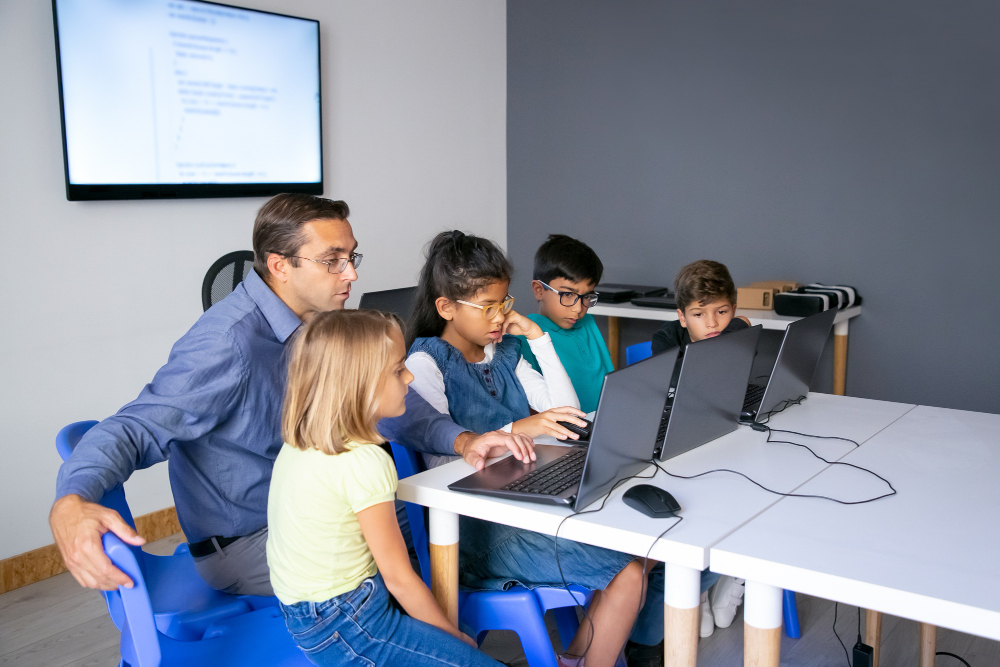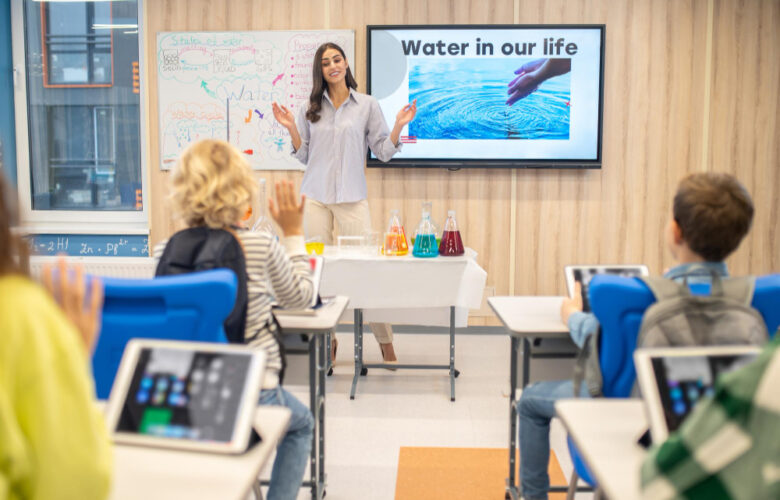Key Takeaways
- Understanding the role of modern technology in the classroom.
- Examining how digital tools enhance student engagement and learning.
- Exploring potential challenges and solutions in integrating technology.
- Highlighting the benefits of a tech-enhanced educational environment.
Introduction to the Digital Classroom
In the dynamic world of education, digital innovations increasingly complement the traditional classroom setup. Technology integration, such as laptops, has dramatically enriched the educational experience by transforming how information is accessed and understood. A variety of laptops help students by replacing the days of relying solely on textbooks and blackboards, providing tools that offer interactive learning experiences and a vast repository of resources at the touch of a button.
Tracing the timeline of technology in education, one can observe a significant shift from using basic calculators and computers to employing sophisticated EdTech tools like augmented reality and virtual classrooms. This evolution represents a paradigm shift in education, where the emphasis is on making learning engaging, accessible, and adaptable to the needs of each student. The digital classroom is not just a concept of the future but a current reality that continues evolving with each technological advancement.
Enhancing Student Learning through Technology
Technology in education is akin to giving students a canvas of infinite possibilities. The introduction of digital tools such as educational apps, interactive e-books, and gamified learning platforms has significantly redefined teaching-learning. These tools facilitate an engaging, immersive learning experience that captures students’ attention and imagination. For instance, educational apps provide customized learning experiences tailored to individual needs, making it possible to address all learning preferences—visual, auditory, or kinesthetic—within one classroom.
Moreover, these digital tools encourage active learning, where students become participants rather than passive recipients of information. Interactive simulations and real-time data analytics empower students to explore subjects profoundly and at their own pace. This interactive nature of learning helps students understand and retain complex concepts. As technology continues to innovate, its role in enhancing the educational landscape will likely grow, offering new strategies for engaging students and measuring their academic progress.
Bridging the Gap: Technology and Student Engagement
A notable benefit of technology in education is its ability to enhance student engagement significantly. Digital tools provide various platforms for students to interact with content multimodally. With the introduction of advanced technology, students can now collaborate on virtual projects, participate in online forums, and engage in real-time discussions with peers and experts around the globe. This virtual connectivity and enhanced communication are crucial in promoting collaborative learning and collective problem-solving.
Additionally, technology encourages creative expression by providing students with tools to visualize ideas and concepts. Platforms that enable students to create digital presentations, videos, and animations enhance understanding and make learning more enjoyable. By moving beyond the confines of traditional methods, technology nurtures a curiosity-driven learning environment where students are more motivated to explore new ideas and skills.
Overcoming Technology Integration Challenges
Despite the numerous benefits, integrating technology into classrooms has its challenges. Issues such as the digital divide and unequal access to technology across different regions and communities pose significant barriers. Schools in economically disadvantaged areas often struggle to provide the necessary devices and reliable internet connections, making it challenging for students to participate in a digitized learning environment.
Educational institutions are adopting various strategies to address these hurdles. Some schools implement BYOD (Bring Your Device) programs, allowing students to use personal devices in classrooms. Others partner with technology companies to receive affordable devices and software solutions. Additionally, government initiatives are increasingly focused on providing funding and resources to bridge the technological gaps and ensure equitable access to digital learning tools. By adopting these strategies, schools can create an environment where every student benefits from the advantages offered by educational technology.
Case Studies: Successful Technology Integration
Several schools across the globe showcase remarkable success stories of technology integration. For instance, a primary school in Finland uses immersive virtual reality experiences to teach history, allowing students to step back in time and explore historical events firsthand. Another example can be seen in a U.S. high school that has implemented a 1-to-1 laptop program, where each student is provided with a laptop to facilitate personalized learning opportunities and digital literacy skills.
These examples and case studies highlight the transformative impact of technology on educational outcomes. Students demonstrate higher academic performance, improved problem-solving skills, and increased engagement with the subject matter. Such examples serve as powerful testimonials to the potential of technology when effectively integrated into educational systems.
The Role of Teachers in a Tech-Empowered Classroom

Teachers are key facilitators in successfully integrating technology into the classroom. Their role in a tech-empowered education system requires adaptation and a willingness to learn and incorporate new teaching methods. Continuous professional development is crucial, providing educators with the necessary training and resources to use digital tools proficiently in their lessons.
Platforms like Edutopia offer valuable insights and guides, enabling teachers to blend traditional teaching methods with digital innovation seamlessly. As educators become comfortable with technology, they can better support students in navigating the digital landscape and encourage them to take charge of their learning journeys.
Evaluating the Impact: Research and Data
Extensive research supports the positive impact of technology in education. Data highlights a notable increase in student motivation and engagement, with tech-enhanced classrooms reporting higher rates of academic achievement and improved test scores. According to a recent article, there has been a marked rise in the use of educational technology, emphasizing its importance as a catalyst for improved learning outcomes.
Research findings also indicate that technology promotes critical thinking and creativity, equipping students with the skills to thrive in a fast-evolving digital world. Educators can tailor instruction and intervention strategies with data-driven insights into student performance, ensuring each student achieves their maximum potential.
The Future of Learning: What’s Next?
As the digital age progresses, the future of education will be marked by continued technological innovations. Future trends include using artificial intelligence to create personalized learning experiences and integrating immersive technologies such as augmented reality and mixed reality to simulate real-world experiences.
While embracing these advancements, educational institutions must also maintain a balanced approach, valuing the core principles of traditional education while embracing new opportunities. By fostering an environment that combines the best of both worlds, schools can prepare students to become adaptable, agile learners who excel in a rapidly changing world.
Final Thoughts on a Technology-Led Educational Revolution
Integrating technology in education represents a significant step toward a more engaged, inclusive, and effective learning environment. By embracing digital tools, educators can offer interactive experiences that enhance academic skills and foster a love of learning. As the education landscape evolves, the key will be to remain open to innovation, ensuring that learning remains accessible and empowering for every student. The educational community can shape future generations as informed, skilled, and responsible global citizens through collaboration, commitment, and continuous advancement.
